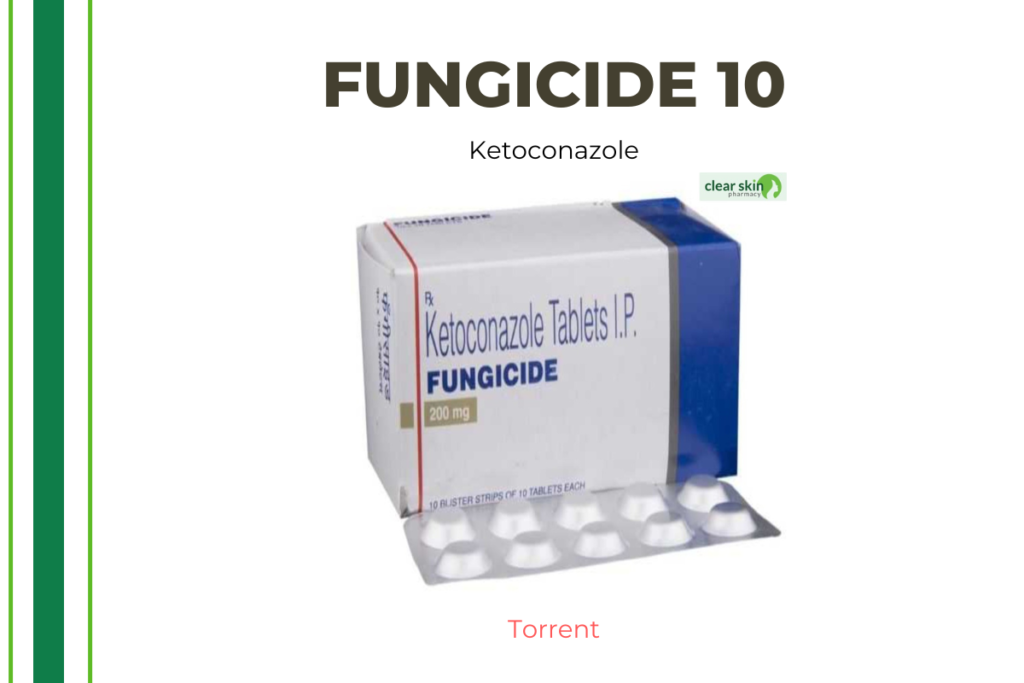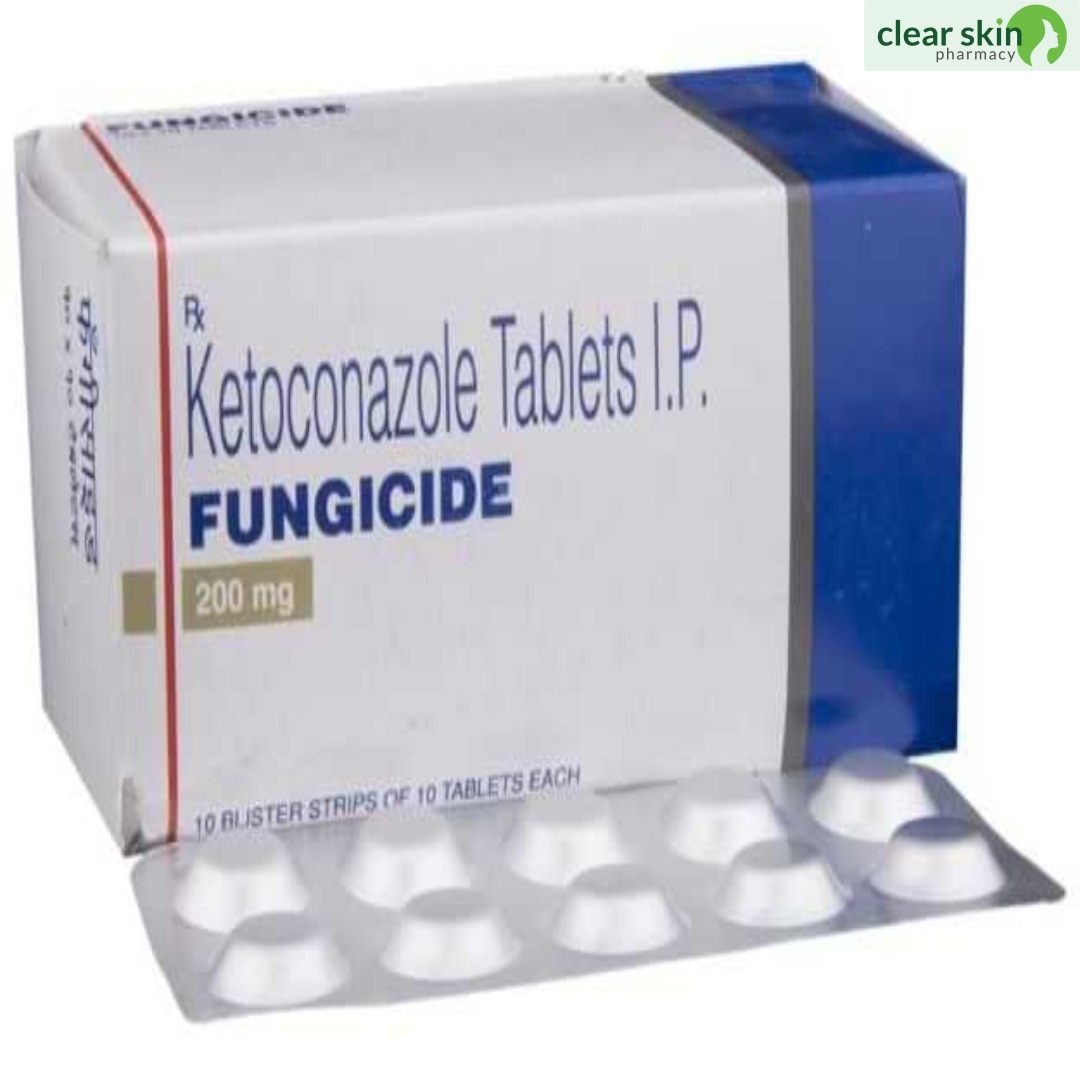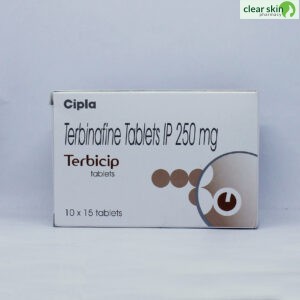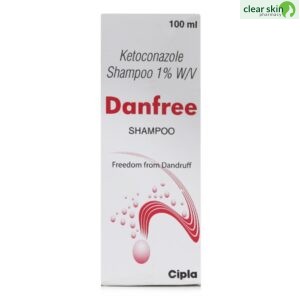Fungicide 200 mg
Antifungal medication Fungicide 200 mg is used to treat fungal skin infections such as ringworm, jock itch, athlete’s foot, seborrheic dermatitis (dry, flaky skin on the face, scalp, chest, or upper back), and pityriasis (a type of skin rash that causes scaly, discolored patches on chest, back, legs and arms).
Fungicide 200 mg inhibits the growth of fungi and yeast by creating holes in their cell membranes. There are both topical and oral formulations of Fungicide 200 mg available. The 200 mg topical formulation of Fungicide can be applied with the finger to a clean and dry affected area. Nose, mouth, or eyes should not come into contact with 200 mg of fungicide. If Fungicide 200 mg accidentally comes into contact with these areas, thoroughly rinse with water.
Common adverse effects include nausea, headaches, diarrhea, abdominal pain, and abnormal liver function test results. Some individuals who apply 200 mg of Fungicide topically may experience dry skin, itching, redness, or a burning sensation. The majority of these side effects from Fungicide 200 mg do not require medical attention and will subside over time. Please consult your physician if the adverse effects persist or worsen.
Because Fungicide 200 mg may cause liver failure, your doctor will closely monitor your liver function while you are taking it. Before administering Fungicide 200 mg to a pregnant or nursing woman, a physician should be consulted. If you are applying Fungicide 200 mg topically, avoid naked flames and smoking. Fungicide 200 mg catches fire and burns easily. Before using Fungicide 200 mg, inform your doctor if you are currently using any steroidal cream, lotion, or ointment so that the dosage can be adjusted. People with liver disease, asthma, a sulphite allergy, an autoimmune condition, or cardiac issues (with a prolonged QT interval) should not use Fungicide 200 mg. Consult your physician before using 200 mg of Fungicide.
Fungi infections are treated with 200 mg of Fungicide.

Medicinal Advantages
Fungicide 200 mg is a topical antifungal used to treat ringworm, jock itch, and athlete’s foot, in addition to seborrheic dermatitis (dry, flaky skin on the face, scalp, chest, and upper back) and pityriasis (a type of skin rash that causes scaly, discoloured patches on chest, back, legs and arms). Fungicide 200 mg orally administered is used to treat fungal infections and Cushing’s syndrome (excessive levels of cortisol hormone). The membranes of fungal cells are essential to their survival, as they prevent unwanted substances from entering the cells and prevent the leakage of cell contents. Fungicide 200 mg destroys fungi’s cell membranes by creating holes in them. As a result, the fungal infection is eliminated, and the skin’s associated cracking, burning, scaling, and itching are alleviated.
Use Instructions
The affected area of skin must be washed and dried prior to application of the cream or gel. Apply a small amount of Fungicide 200 mg to the affected area and its surrounding skin using your fingertip. 200 mg of fungicide should only be applied to the exterior of the body. Nose, mouth, or eyes should not come into contact with 200 mg of fungicide. If Fungicide 200 mg accidentally comes into contact with these areas, thoroughly rinse with water. If your hands are not the affected area, wash them before and after applying 200 mg of Fungicide to prevent infection. Use Fungicide 200 mg in shampoo form only if your physician has prescribed it. Use 200 mg of Fungicide to wash your hair and leave it on for three to five minutes. After that, thoroughly rinse it. If you are taking 200 mg of Fungicide orally, swallow the entire tablet with a full glass of water. To avoid stomach upset, Fungicide 200 mg should be taken with food. It should not be crushed, chewed, or broken.
Place in a cool, dry area out of direct sunlight.
Fungicide 200 mg Side Effects
As with all medications, Fungicide 200 mg may cause side effects such as dry skin, itching, redness, or a burning sensation on the skin. The majority of these side effects from Fungicide 200 mg do not require medical attention and will subside over time. Please consult your physician if the adverse effects persist or worsen.
Drug Recommendations
Because it can cause irritation, topical Ketoconazole should not be applied to the nose, mouth, or eyes. If Ketoconazole accidentally comes into contact with these areas, thoroughly rinse with water. If you are pregnant, planning to become pregnant, or breastfeeding, you should not take ketoconazole. If you are applying Ketoconazole topically, avoid naked flames and smoking. Ketoconazole ignites and burns rapidly. Inform your doctor if you have asthma, an allergy to sulpha medications, an autoimmune disease, heart, or liver issues prior to taking ketoconazole. Ketoconazole can destroy the liver to the point where a liver transplant is required or death occurs. Ketoconazole is contraindicated for the treatment of fungal infections of the fingernails and toenails, prostate cancer, and Cushing’s syndrome. Avoid direct sunlight exposure while taking ketoconazole, as it may increase your skin’s sensitivity to the sun and hasten the onset of sunburn. When going outside, use a sunscreen with a high SPF (SPF 30 or above).
Interactions Between Drugs
Ketoconazole may interact with heartburn and acidity medications (omeprazole), immunosuppressants (cyclosporin), glucocorticoids (fluticasone, hydrocortisone), antifungals (fluconazole), antidepressants (escitalopram), blood cholesterol-lowering medications (atorvastatin), bronchodilators (albuterol), and blood thinners (warfarin) (alprazolam).
Ketoconazole may interact with tea, coffee, cola, and energy drinks containing caffeine, intensifying the negative effects of caffeine. Ketoconazole should not be taken with cannabis because it may exacerbate the drug’s negative effects. Additionally, alcohol consumption should be avoided while taking Ketoconazole, as it may increase the risk of liver damage.
Before taking Ketoconazole, inform your physician if you have asthma, a sulphite allergy, an immunological disorder, or heart or liver issues.
Safety Suggestions
ALCOHOL
Avoid drinking alcohol while taking Ketoconazole, as it may cause liver damage and other side effects.
PREGNANCY
Ketoconazole is a pregnancy Category C drug that should only be given to a pregnant woman if the benefits outweigh the risks.
BREAST FEEDING
If you are breastfeeding your child, you should discuss ketoconazole’s potential to pass into breast milk and cause adverse effects in the infant with your doctor.
DRIVING
Oral administration of ketoconazole may cause dizziness or drowsiness. Therefore, only operate a motor vehicle if you are alert after taking Ketoconazole.
LIVER
Consult a physician if you have any concerns regarding the use of ketoconazole in patients with liver disorders.
KIDNEY
When prescribed by a physician, ketoconazole is safe for patients with kidney issues.
No habits formed
Advice on Diet and Lifestyle
Regularly replace your socks and wash your feet. Avoid footwear that causes your feet to perspire and become overheated.
Avoid walking barefoot in moist areas such as locker rooms and gym showers to prevent fungal infections.
Scratching an infected skin area can spread the infection to other areas of the body.
Towels, combs, sheets, footwear, and socks should not be shared.
Your bed linens and towels should be laundered frequently.
Ketoconazole (oral form) should not be taken with chocolate or caffeine-containing foods, such as cocoa beans, tea, coffee, cola, or energy drinks, as this may exacerbate the negative effects of caffeine.
Avoid drinking alcohol while taking Ketoconazole (oral form), as it can increase the risk of side effects and liver damage.
Recommendations
Before applying Ketoconazole, clean and dry the affected area.
Nose, mouth, or eyes should not come into contact with ketoconazole. If Ketoconazole accidentally comes into contact with these areas, thoroughly rinse with water.
Wait at least three hours after applying Ketoconazole before washing the treated areas.
Additional information: This item is non-refundable.
Concerns of Patients
Infected tissue is caused by a fungus, resulting in a fungal infection. It is possible for fungal diseases to be contagious (spread from one person to another). Ringworm is a contagious fungal disease of the skin or scalp that causes a rash in the shape of a ringworm. Tinea cruris, also known as jock itch, is a fungus that causes a red, itchy rash in warm, moist areas of the body, such as the groin, buttocks, and inner thighs. Athlete’s foot, also known as tinea pedis, is a fungal infection that typically begins between the toes, especially in individuals who perspire heavily and wear tight shoes. Athletes are the most aware of this fact. A scaly rash is the cause of itching, burning, or stinging sensations. Seborrheic dermatitis is a skin condition that causes an itchy rash with dry, flaky scales on the oil gland-containing skin of the scalp, face, back, and upper chest.
FAQs
A fungal infection is a contagious skin condition that spreads through direct skin-to-skin contact, contaminated soil or surfaces, and sick animals. Therefore, it is recommended to avoid close contact with the sick individual until the virus has cleared, as this can transmit the infection.
While taking oral Ketoconazole (tablets), you should avoid consuming chocolate and caffeine-containing foods and beverages, such as cocoa beans, tea, coffee, cola, and energy drinks, as these may exacerbate the negative effects of caffeine, such as drowsiness, restlessness, and nausea.
Ketoconazole contains stearyl alcohol and cetyl alcohol, which can cause contact dermatitis and other skin reactions (a red, itchy rash caused by direct touch with a chemical). If the irritation worsens or persists, please consult a physician.
After applying Ketoconazole for at least 20 minutes, makeup or sunscreen should be applied to the treated area.
Ketoconazole should be taken for as long as prescribed by a physician. Please see a doctor if the condition worsens or persists after 2 to 4 weeks of treatment with Ketoconazole.
It is not recommended to stop taking Ketoconazole without first consulting your physician, as doing so could result in a recurrence of infection. Therefore, take Ketoconazole for as long as your physician prescribes, and consult your physician if you experience any side effects.
If taken for an extended period of time, ketoconazole can cause severe liver damage and heart problems, such as life-threatening heart rate or heart rhythm disorders. Before using Ketoconazole if you have any type of heart or liver condition, consult your doctor.








Be the first to review “FUNGICIDE 10 Tablets 200 mg”